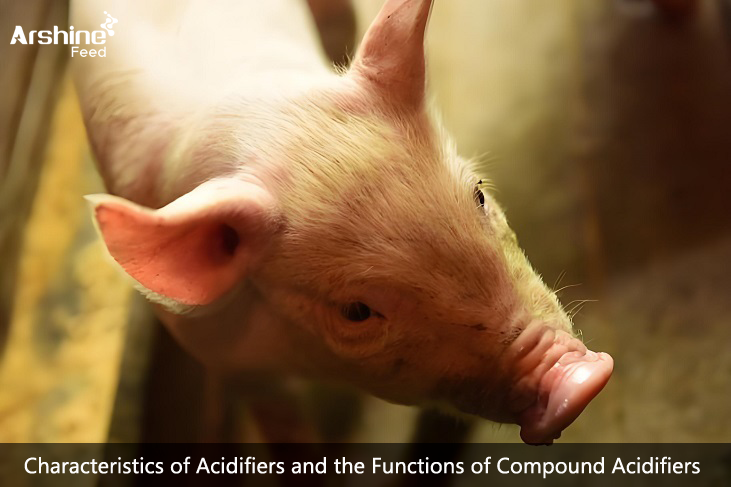

Arshine Acidifiers belong to the category of non-residue, non-antibiotic products. These functional additives are designed based on the actual conditions of farmed animals, taking into account factors such as water hygiene, nutrient digestion, and stress-related diseases. Acidifiers not only purify drinking water directly but also do not clog water lines.
When choosing a suitable acidifier, make sure it has the following 10 characteristics:
Some may ask, is a lower pH in acidifiers better? Will long-term use affect the health of pigs?
Strong acids are highly corrosive, severely damaging utensils and equipment. High total acid content and low dilution can interfere with gastric acid secretion (in the case of hydrochloric acid) or cause environmental pollution (in the case of phosphoric acid). Inorganic strong acids or high total acid content (>60%) should not be used just to lower the pH.
Additionally, strong acids can cause allergic reactions and skin burns. An acidifier should be free of strong acids (such as hydrochloric or phosphoric acid), non-corrosive, non-interfering with gastric acid secretion, and environmentally friendly. As mentioned earlier, pH should be regulated within an appropriate range for long-term use. Aiming for a very low pH can affect pigs' water consumption and thus their health.
1. Inhibits the growth of various harmful bacteria
Multiple organic acids are synergistically combined, along with the innovative addition of natural active monomers with antibacterial and anti-inflammatory properties—CHARCONE DERIVATIVES—further enhancing the product’s bacteriostatic and bactericidal capabilities. Adding 0.5–1‰ of this product can inhibit more than 99% of microorganism growth in drinking water, purify water lines, and reduce the intake of harmful microorganisms.
2. Efficiently removes biofilms in water lines
Biofilms commonly found in water lines are primarily formed by the excessive growth of drug-resistant bacteria. These bacteria grow and multiply rapidly by using the sugars in added vitamins and medications, eventually developing resistance to the drugs. Once an infection occurs, it is extremely difficult to treat. The innovative addition of natural active monomers (powerful membrane-acting agents) and the synergistic combination of various organic acids can effectively remove biofilms from water lines. Adding this product at a concentration of 1‰ can efficiently eliminate biofilms and purify water lines.
3. Increases feed intake
This product has a unique sweet-sour taste that stimulates animals' taste buds, increasing appetite and promoting feed intake. Additionally, the small molecular organic acids, compounded at specific ratios, can effectively lower the pH of stomach contents, promote the activation of digestive enzymes, and aid digestion, particularly compensating for insufficient gastric acid secretion in young animals.
4. Effectively inhibits virus reproduction transmitted through drinking water
Scientific research has proven that adding 0.5–1.0‰ of this product to drinking water can maintain the pH between 3 and 4, effectively inhibiting the reproduction and transmission of various viruses, including ASFV, ensuring the safety of drinking water.
Add: Block 14, No.100, Luyun Road,Changsha 410205,China.
Mobile: +86 18874001228
Email: info@arshinefeed.com
WhatsApp: 8618874001228
WeChat: weiyuyan91